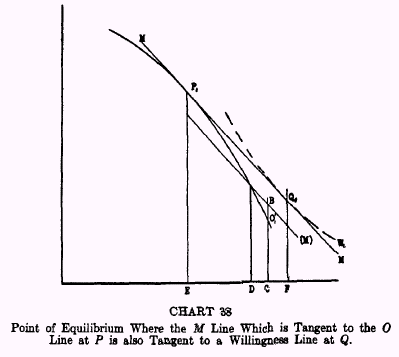According to the modern theory, the four determinants, namely, saving, investment, liquidity preference and the supply of money are integrated along with income and determine the rate of interest. In order to achieve this, the modern theory has evolved two curves- the IS curve and LM curve- the former shows the equilibrium in the real sector or product market, while the latter indicates the equilibrium in monetary sector or money market. IS curve indicates the various rates of interest which equalize saving and investment at the corresponding levels of income. Higher the level of income, greater is the volume of saving. Greater the volume of saving, lower will be the rate of interest. Thus, as the level of income rises, the rate of interest falls down. Hence, the IS curve slopes downward from left to right (Fig.). The LM curve shows the various rates of interest, which equalize the demand for cash (liquidity preference) of the people with the supply of cash at various levels of income. As the level of income increases, the liquidity preference (or the demand for cash) of the people increases and consequently the interest rate also increases.

Fig: Interest determination by modern theory
